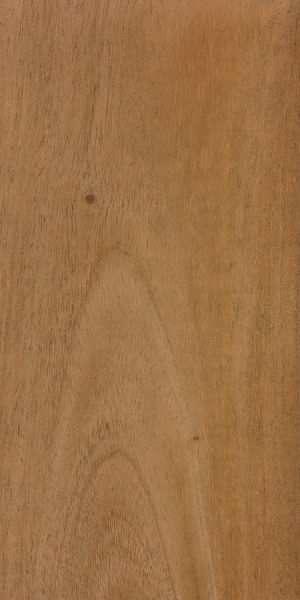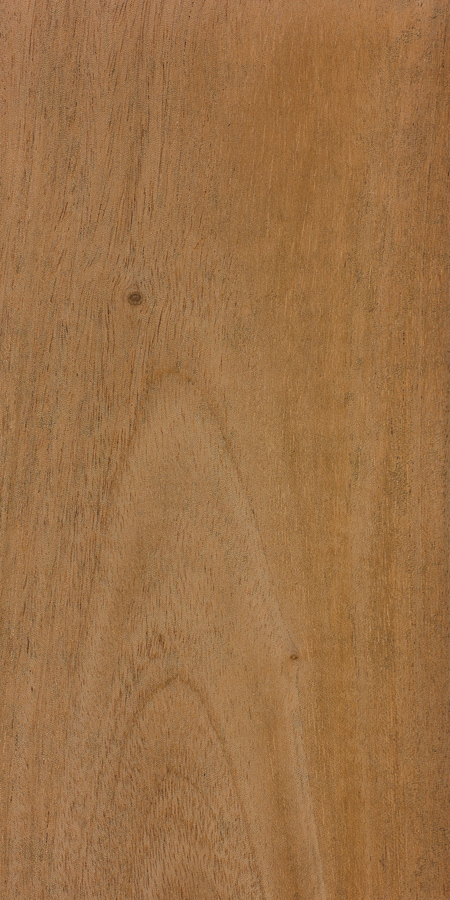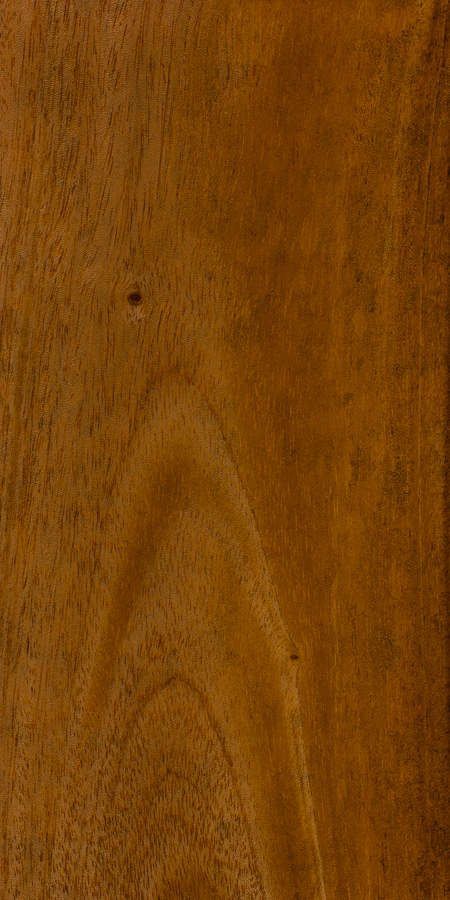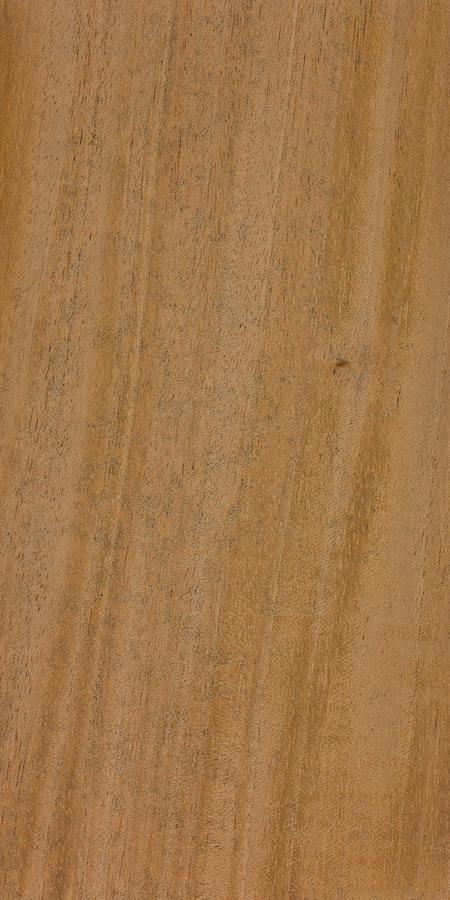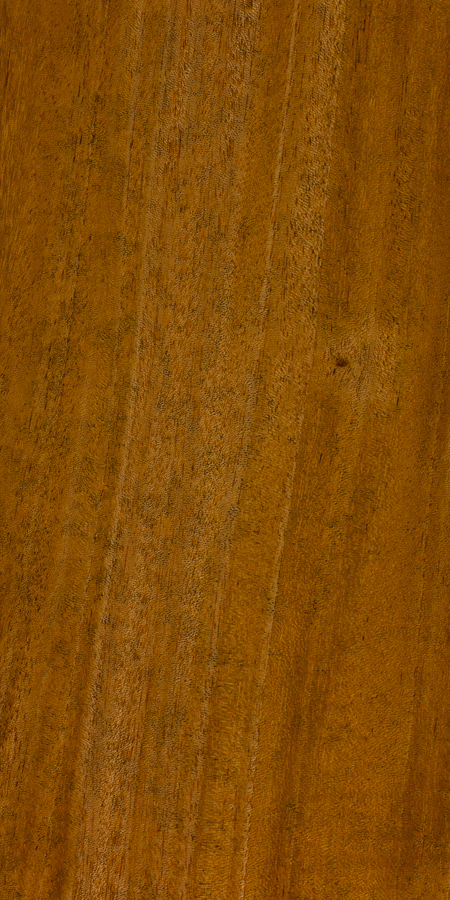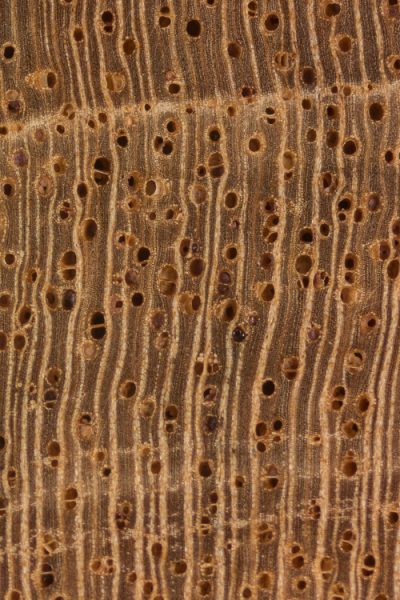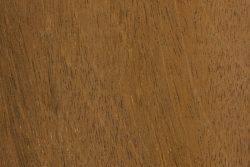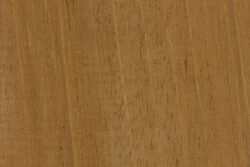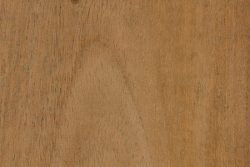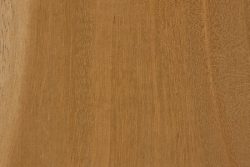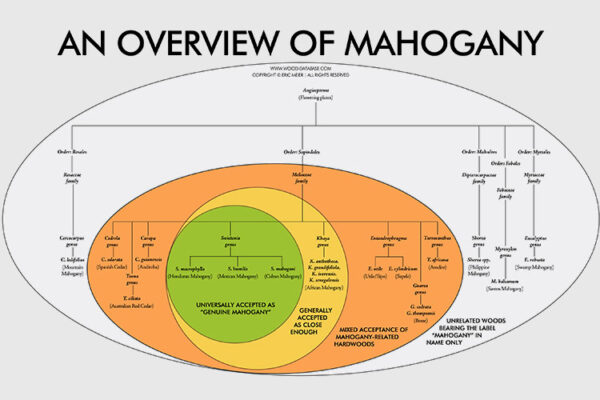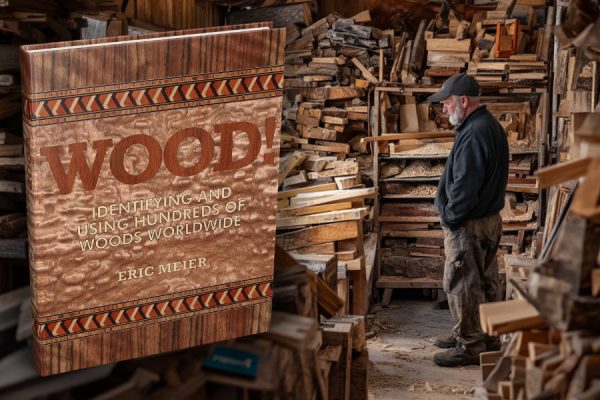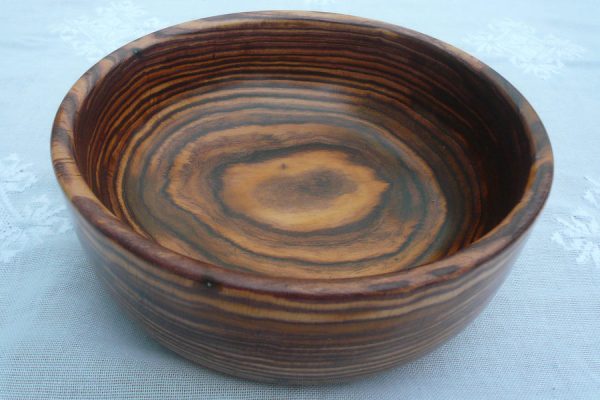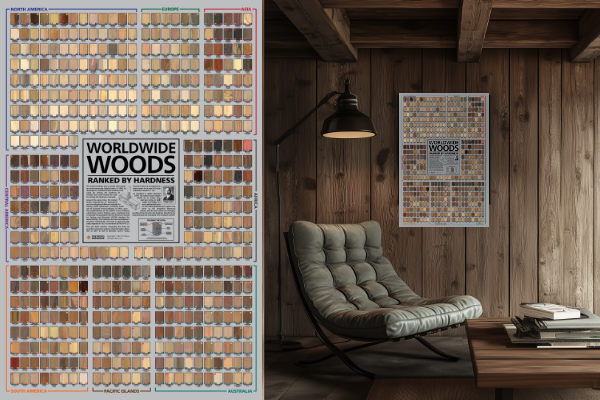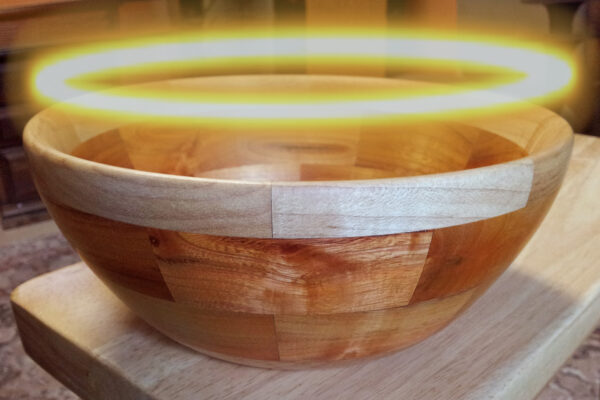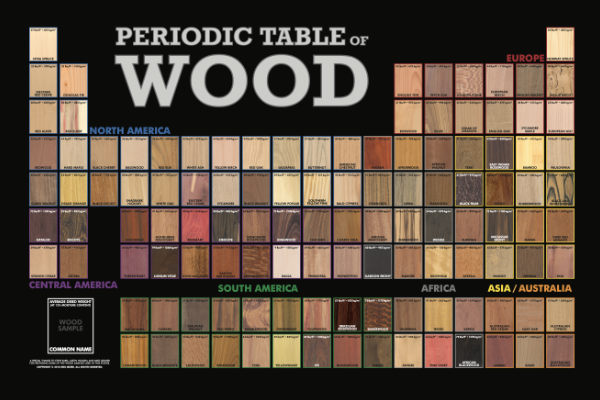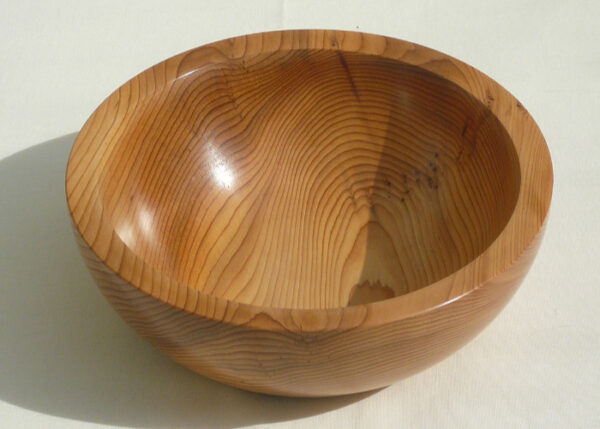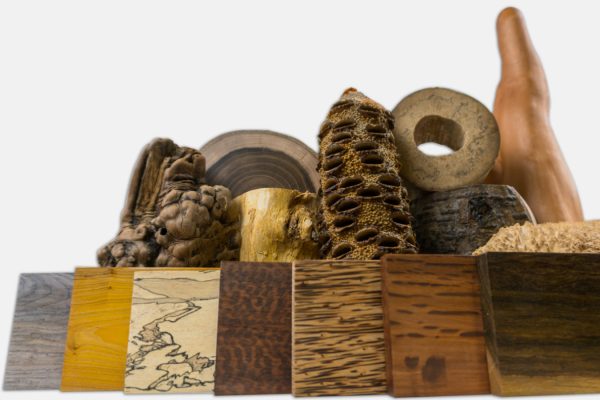Common Name(s): Hybrid mahogany, caoba hibrido
Scientific Name: Swietenia macrophylla × mahogani, also sometimes written as Swietenia × aubrevilleana (see comments below)
Distribution: Costa Rica and other tropical regions of Central America
Tree Size: 100–130 ft (30–40 m) tall,
2–4 ft (.6–1.2 m) trunk diameter
Average Dried Weight:AVERAGE DRIED WEIGHT
Density is the measurement of a wood’s weight per unit volume. Here, "dried weight" specifically refers to wood at 12% moisture content, and values are given in pounds per cubic foot and kilograms per cubic meter. Also keep in mind that density commonly varies by +/- 10% from the average.
Click on the link "Average Dried Weight" for more details. 40.3 lbs/ft3 (645 kg/m3) Medium-Low WEIGHT TIERS
Extremely Low: 0+ kg/m3
Very Low: 420+ kg/m3
Low: 520+ kg/m3
Medium-Low: 620+ kg/m3
Medium: 730+ kg/m3
Medium-High: 840+ kg/m3
High: 960+ kg/m3
Very High: 1,080+ kg/m3
Extremely High: 1,200+ kg/m3
Tiers are based on CSIRO provisional strength groupings (SD1-SD8) based on density.
Janka Hardness:JANKA HARDNESS
This test measures a wood’s resistance to indentation, and is the pounds of force (or Newtons) required to embed a .444" (11.28 mm) diameter steel ball halfway into the wood. Values are for side grain, measured at 12% MC.
Click on the link "Janka Hardness" for more details. 1,180 lbf (5,250 N)* Medium-Low JANKA HARDNESS TIERS
Extremely Low: 0+ N
Very Low: 2,050+ N
Low: 3,150+ N
Medium-Low: 4,480+ N
Medium: 6,280+ N
Medium-High: 8,380+ N
High: 11,080+ N
Very High: 14,000+ N
Extremely High: 17,450+ N
Tiers are derived from CSIRO provisional strength classifications (SD1-SD8) in conjunction with the USDA's estimated hardness based on density.
*estimated hardness based on specific gravity
† No strength or shrinkage data available; values are most likely very similar to the related Honduran mahogany (Swietenia macrophylla)
Color/Appearance: Heartwood color can vary a fair amount, from a pale pinkish brown to a darker reddish brown. Color tends to darken with age. Mahogany also exhibits an optical phenomenon known as chatoyancy.
Grain/Texture: Grain can be straight, interlocked, irregular or wavy. Texture is medium and uniform, with moderate natural luster.
Rot Resistance: Varies from moderately durable to very durable depending on density and growing conditions of the tree. Heartwood is generally resistant to termites, but vulnerable to other insects.
Workability: Typically very easy to work with both hand and machine tools. (With exception to sections with figured or irregular grain, which can tearout or chip during machining.) Slight dulling of cutters can occur. Sands very easily. Turns, glues, stains, and finishes well.
Odor: No characteristic odor.
Allergies/Toxicity: Although severe reactions are quite uncommon, mahogany has been reported as a sensitizer. Usually most common reactions simply include eye, skin and respiratory irritation, as well as less common effects, such as boils, asthma-like symptoms, nausea, giddiness, and hypersensitivity pneumonitis. See the articles Wood Allergies and Toxicity and Wood Dust Safety for more information.
Pricing/Availability: Despite export restrictions, mahogany continues to be available in lumber or veneer form, ideally from plantations. (Though because of CITES restrictions, most US-based retailers are unable to ship the wood internationally.) Prices are in the mid range for an imported hardwood, though the wood tends to be more expensive than African mahogany (Khaya spp.). Figured or quartersawn lumber is also more expensive.
Sustainability: As a hybrid, these trees do not qualify to be evaluated by the IUCN for the Red List of Threatened Species. In general, plantation-growth lumber is considered a sustainable alternative to harvesting wild trees. However, under CITES’ policy for hybrids, hybrid mahogany would be protected and considered listed on Appendix II because one of its parents (in this case, both Swietenia macrophylla and S. mahogani) are listed on Appendix II.[1]Conference of the Parties to the Convention on International Trade in Endangered Species of Wild Fauna and Flora. (2019). Regulation of trade in plants [Resolution Conf. 11.11 (Rev. CoP18)].
Common Uses: Furniture, cabinetry, turned objects, veneer, musical instruments, boatbuilding, and carving.
Comments: The term hybrid mahogany is used to describe a cross between the two commercial mahogany species: Honduran mahogany and Cuban mahogany. Although the hybrid formula Swietenia macrophylla × mahogani is clearly laid out and easy to understand, this syntax is only botanically correct when specifying the first generation hybrids between these two species. If such a hybrid further crosses back with one of its parent species, it can quickly become long and cumbersome, e.g., (Swietenia macrophylla × mahogani) × macrophylla. Hence, the collective name Swietenia × aubrevilleana is what’s technically and formally recognized because it still maintains the hybrid status (marked by the “×”) but denotes the entire spectrum of crosses between the two species. However, for the sake of clarity, the Wood Database defaults to the formula name for this hybrid—which also appears to be the preferred name by several authors, either incidentally[2]Francis, J. K. (2002). Swietenia macrophylla x mahogani. In J. A. Vozzo (Ed.), Tropical tree seed manual (pp. 726–728). U.S. Department of Agriculture, Forest Service. or intentionally.[3]Little, E. L. (1960). Designating Hybrid Forest Trees. Taxon, 9(8), 225–231.[4]Whitmore, J. L., & Hinojosa, G. (1977). Mahogany (Swietenia) hybrids (USDA Forest Service Research Paper ITF-24). U.S. Department of Agriculture, Forest Service, Institute of Tropical Forestry.
There are three recognized Swietenia species—meaning there are technically two other possible hybrid combinations (both with the smaller S. humilis). Hybridization between S. humilis × macrophylla, as well as between S. humilis × mahongani is strongly suspected to occur (either in the wild, or between populations of cultivated trees).[5]Styles, B. T. (1972). The flower biology of the Meliaceae and its bearing on tree breeding. Silvae Genetica, 21(5), 175–182. However, a 1977 report speaking of S. humilis × macrophylla found that “no controlled pollination has been attempted between these two species, and we can’t identify the male parent of field specimens.”[6]Whitmore, J. L., & Hinojosa, G. (1977). Mahogany (Swietenia) hybrids (USDA Forest Service Research Paper ITF-24). U.S. Department of Agriculture, Forest Service, Institute of Tropical Forestry. Thus, the only hybrid that’s currently certified is Swietenia macrophylla × mahogani.
Ultimately, the hybrid between Swietenia macrophylla and S. mahogani is said to be the best of both worlds: the strong growth rate of S. macrophylla with the slightly denser wood of S. mahogani.[7]Styles, B. T. (1972). The flower biology of the Meliaceae and its bearing on tree breeding. Silvae Genetica, 21(5), 175–182.
Images: Drag the slider up/down to toggle between raw and finished wood.
A special thanks to Thrity Vakil for donating wood samples of hybrid mahogany.
Do you have images of projects made from this wood species? You can submit them to me here.
Identification: See the article on Hardwood Anatomy for definitions of end grain features.
Porosity:POROSITY
Specifies the overall pore structure (ring-porous, semi-ring-porous, or diffuse porous), and notes if annual growth rings may still be seen even for diffuse porous hardwoods.
Click on the link “Porosity” for more details. diffuse porous; growth rings usually distinct due to marginal parenchyma bands
Arrangement:ARRANGEMENT
Describes the more individual pore arrangements found throughout the end grain surface, such as solitary, multiples, chains, clusters, etc.
Click on the link “Arrangement” for more details. solitary and radial multiples
Vessels:VESSELS
Describes the relative size and frequency of the pores (vessels), as well as any contents found in the pores, such as tyloses, colored mineral deposits, etc.
Click on the link “Vessels” for more details. large, few; reddish brown deposits occasionally present
Parenchyma:PARENCHYMA
Describes the pattern(s) of the parenchyma cells seen on the endgrain, such as vasicentric, aliform (winged or lozenge), confluent, and banded.
Click on the link “Parenchyma” for more details. vasicentric, banded (marginal)
Rays:RAYS
Describes the relative width and frequency of the rays (appearing as thin vertical lines on the endgrain), as well as a note on if these rays are visible with/without magnification.
Click on the link “Rays” for more details. medium width, normal spacing; most rays are generally not visible without magnification
Lookalikes/Substitutes: Khaya species (known commercially as African mahogany) are the closest in both appearance and anatomy. Swietenia species usually have marginal parenchyma bands, while Khaya species typically lack such bands. See the article Mahogany Mixups for more info.
Notes: Ripple marks present on flatsawn surfaces.
(Species)
(Authority)
Related Content:
References[+]
| ↑1 | Conference of the Parties to the Convention on International Trade in Endangered Species of Wild Fauna and Flora. (2019). Regulation of trade in plants [Resolution Conf. 11.11 (Rev. CoP18)]. |
|---|---|
| ↑2 | Francis, J. K. (2002). Swietenia macrophylla x mahogani. In J. A. Vozzo (Ed.), Tropical tree seed manual (pp. 726–728). U.S. Department of Agriculture, Forest Service. |
| ↑3 | Little, E. L. (1960). Designating Hybrid Forest Trees. Taxon, 9(8), 225–231. |
| ↑4, ↑6 | Whitmore, J. L., & Hinojosa, G. (1977). Mahogany (Swietenia) hybrids (USDA Forest Service Research Paper ITF-24). U.S. Department of Agriculture, Forest Service, Institute of Tropical Forestry. |
| ↑5, ↑7 | Styles, B. T. (1972). The flower biology of the Meliaceae and its bearing on tree breeding. Silvae Genetica, 21(5), 175–182. |

